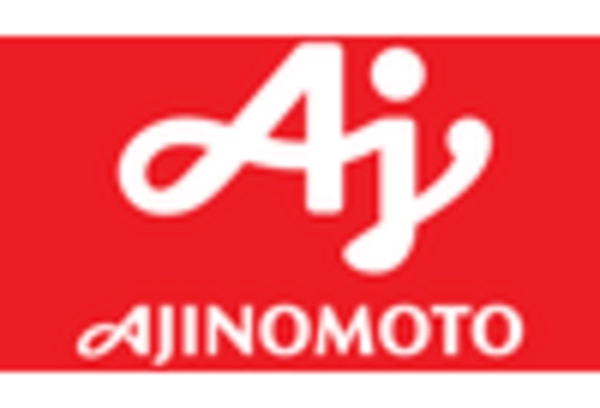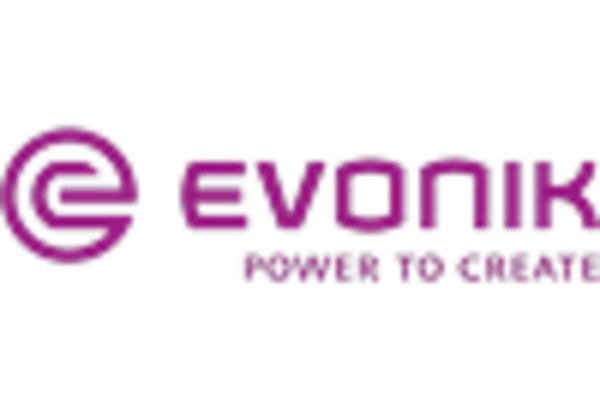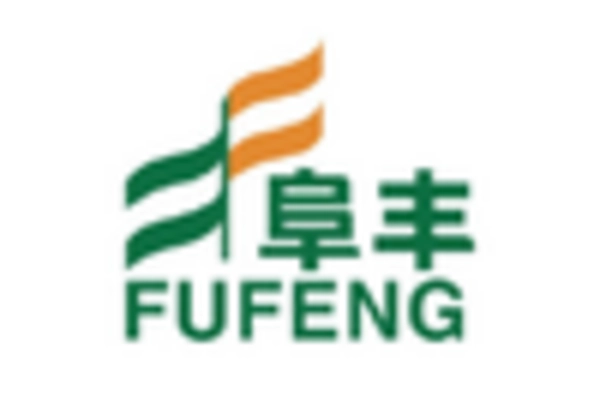Increasing Use in Pharmaceuticals
The Aspartic Acid Market is experiencing a notable increase in demand from the pharmaceutical sector. Aspartic acid is utilized in the synthesis of various pharmaceutical compounds, including amino acids and peptides, which are essential for drug formulation. The market for pharmaceuticals is projected to grow at a compound annual growth rate of approximately 5.5% over the next few years, which could drive the demand for aspartic acid. Furthermore, the rising prevalence of chronic diseases necessitates the development of new therapeutic agents, thereby enhancing the need for aspartic acid in drug manufacturing. This trend indicates a robust potential for growth within the Aspartic Acid Market, as pharmaceutical companies seek to innovate and expand their product offerings.
Surge in Agricultural Applications
The Aspartic Acid Market is witnessing a surge in applications within the agricultural sector, particularly in the formulation of fertilizers and animal feed. Aspartic acid serves as a vital component in the production of amino acid-based fertilizers, which are gaining traction due to their efficiency in enhancing crop yield and quality. The Aspartic Acid is expected to reach USD 200 billion by 2026, suggesting a substantial opportunity for aspartic acid utilization. Additionally, the incorporation of aspartic acid in animal feed promotes better growth and health in livestock, which aligns with the increasing demand for high-quality protein sources. This trend underscores the potential for aspartic acid to play a crucial role in sustainable agricultural practices, thereby bolstering its market presence.
Rising Demand for Bio-based Products
The Aspartic Acid Market is benefiting from the rising demand for bio-based products, driven by consumer preferences for sustainable and environmentally friendly alternatives. Aspartic acid, being a naturally occurring amino acid, is increasingly being utilized in the production of bio-based polymers and biodegradable materials. The global market for bio-based chemicals is projected to grow significantly, with estimates suggesting a CAGR of around 10% over the next five years. This trend indicates a shift towards greener solutions, which could enhance the market for aspartic acid as manufacturers seek to develop eco-friendly products. The alignment of aspartic acid with sustainability goals positions it favorably within the Aspartic Acid Market.
Technological Advancements in Production
Technological advancements in the production processes of aspartic acid are significantly influencing the Aspartic Acid Market. Innovations such as enzymatic synthesis and fermentation methods are enhancing the efficiency and sustainability of aspartic acid production. These methods not only reduce production costs but also minimize environmental impact, aligning with the growing emphasis on sustainable manufacturing practices. As a result, manufacturers are likely to increase their output to meet the rising demand across various sectors, including food, pharmaceuticals, and agriculture. The adoption of these advanced technologies could potentially lead to a more competitive landscape within the Aspartic Acid Market, as companies strive to optimize their production capabilities.
Expanding Applications in Personal Care Products
The Aspartic Acid Market is also experiencing growth due to its expanding applications in personal care products. Aspartic acid is increasingly being incorporated into cosmetics and skincare formulations due to its moisturizing and skin-conditioning properties. The Aspartic Acid is anticipated to reach USD 500 billion by 2026, indicating a substantial opportunity for aspartic acid utilization. As consumers become more conscious of the ingredients in their personal care products, the demand for natural and effective components like aspartic acid is likely to rise. This trend suggests a promising avenue for growth within the Aspartic Acid Market, as manufacturers adapt to evolving consumer preferences.

















Leave a Comment